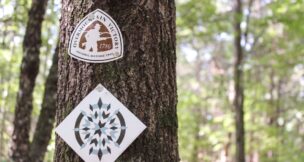Nearly a Mile of Congaree River Frontage Permanently Protected
CRBR Biz Wire //August 7, 2023//

Audubon South Carolina, Ducks Unlimited, and Friends of Congaree Swamp announced today the permanent protection of 400 acres in the Fort Motte community of Calhoun County.
“The permanent protection of the Arant tract is a tangible example of our organization’s mission to promote compatible land uses outside Congaree National Park,” said Friends of Congaree Swamp president John Grego. “We are delighted to have a role in acquiring this spectacular riverfront tract and in facilitating its long-term ownership by Audubon South Carolina.”
Situated near the confluence of the Congaree and Wateree Rivers, the property has nearly a mile of forested river frontage providing scenic views of the adjacent 26,900-acre Congaree National Park and serves as a significant migratory passageway for waterfowl and neotropical migrants including dozens of species of warblers, vireos, thrushes, tanagers and sparrows.
“The Arant tract is not only stunning, but it is also one of the highest priority parcels for conservation in the area,” said Audubon South Carolina Executive Director Rebecca Haynes. “We’re grateful to partner with Ducks Unlimited, which holds an easement, to steward and protect this special property in perpetuity.”
Funding for the acquisition and conservation easement was made possible by a generous contribution by the landowner, Kam Arant, as well as a grant by the South Carolina Conservation Bank. The tract has been owned by the Arant family since 1949. Permanent protection of the tract was especially important to Ms. Arant’s late husband Tom and her late brother-in-law Sam Arant.
“We were proud to work with a passionate landowner on this unique easement project. With nearly a mile of river frontage with panoramic views of Congaree National Park, protection of this remarkable property was critical to conservation efforts within this corridor,” said Ali Bastian, Ducks Unlimited Land Protection Specialist.
The Congaree-Wateree watershed is an area of historical and cultural significance. Scientists have found fossils dating back thousands of years in the National Park and surrounding areas. The area was also home to indigenous peoples who used the rivers and high bluffs to hunt and forage. An archeological site near the property, listed in the National Register of Historic Places as the “Prehistoric Indian Village,” has yielded artifacts from a native settlement dating as far back as the Archaic period. Additionally, a significant battle was fought at a property downriver from the Arant tract during the American Revolutionary War, which is also listed in the National Register.
“From a national park of global significance to cultural resources that span centuries, the Congaree and Wateree watersheds are prime examples of what makes our state so special,” commented Raleigh West, executive director, South Carolina Conservation Bank. “We commend the work of the partners in adding another protected property to a growing list in this significant region.”
The acquisition of the Arant tract marks the first in Audubon South Carolina’s newest preserve along the Congaree River. However, it bolsters a long legacy and growing network of protected lands bordering the Congaree, Santee and Wateree Rivers—most notably, the nearby Congaree Bluffs Heritage Preserve and the nearly 27 thousand acres that comprise Congaree National Park.
Audubon South Carolina intends to restore a portion of the property to longleaf pine and mixed xeric upland hardwood and shortleaf pine forests that would have once occurred there. The organization will continue allowing public access to the property for ongoing research and education efforts, as well as an annual homecoming for African American families to visit ancestral homesites and cemeteries.
-













